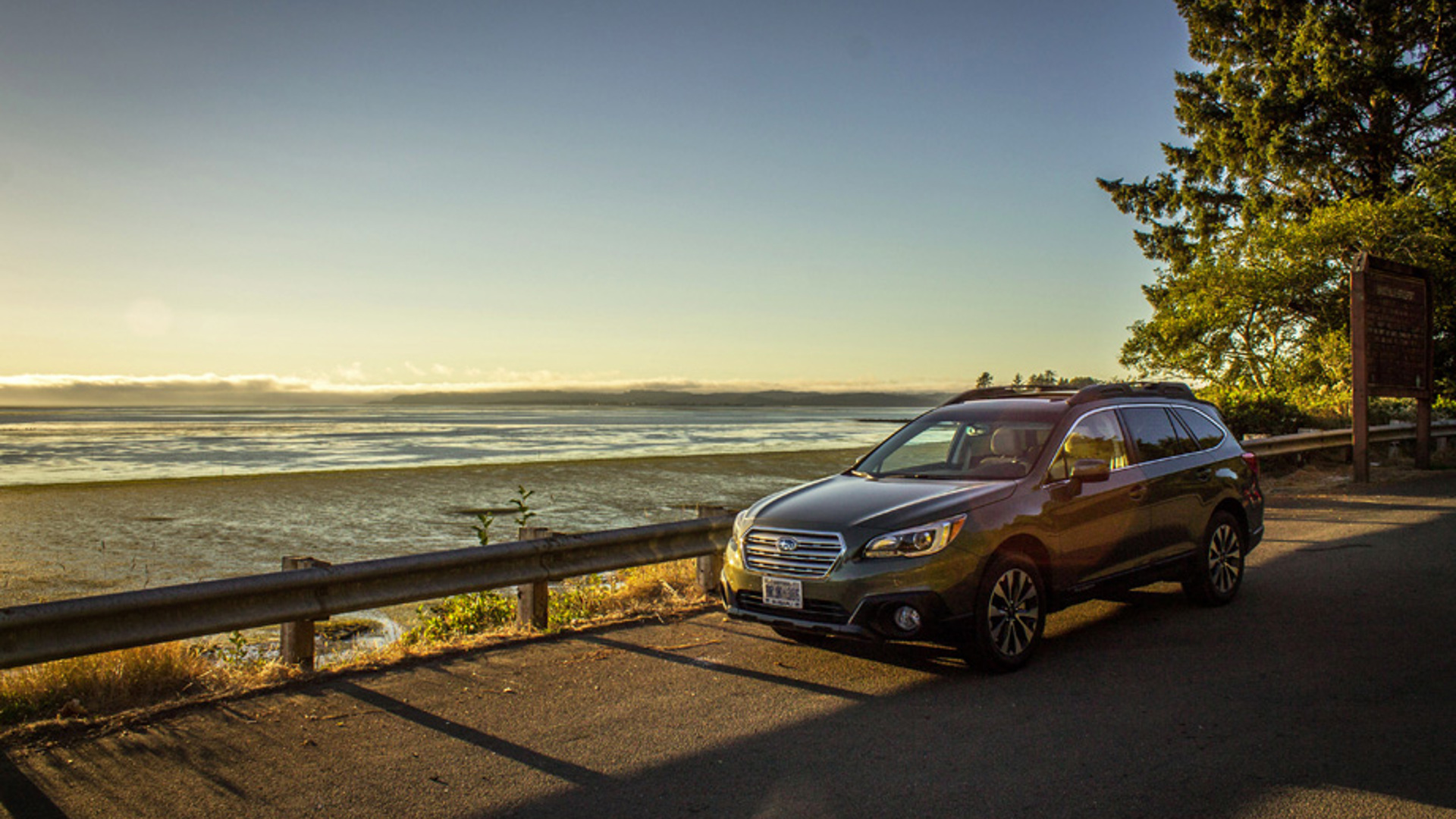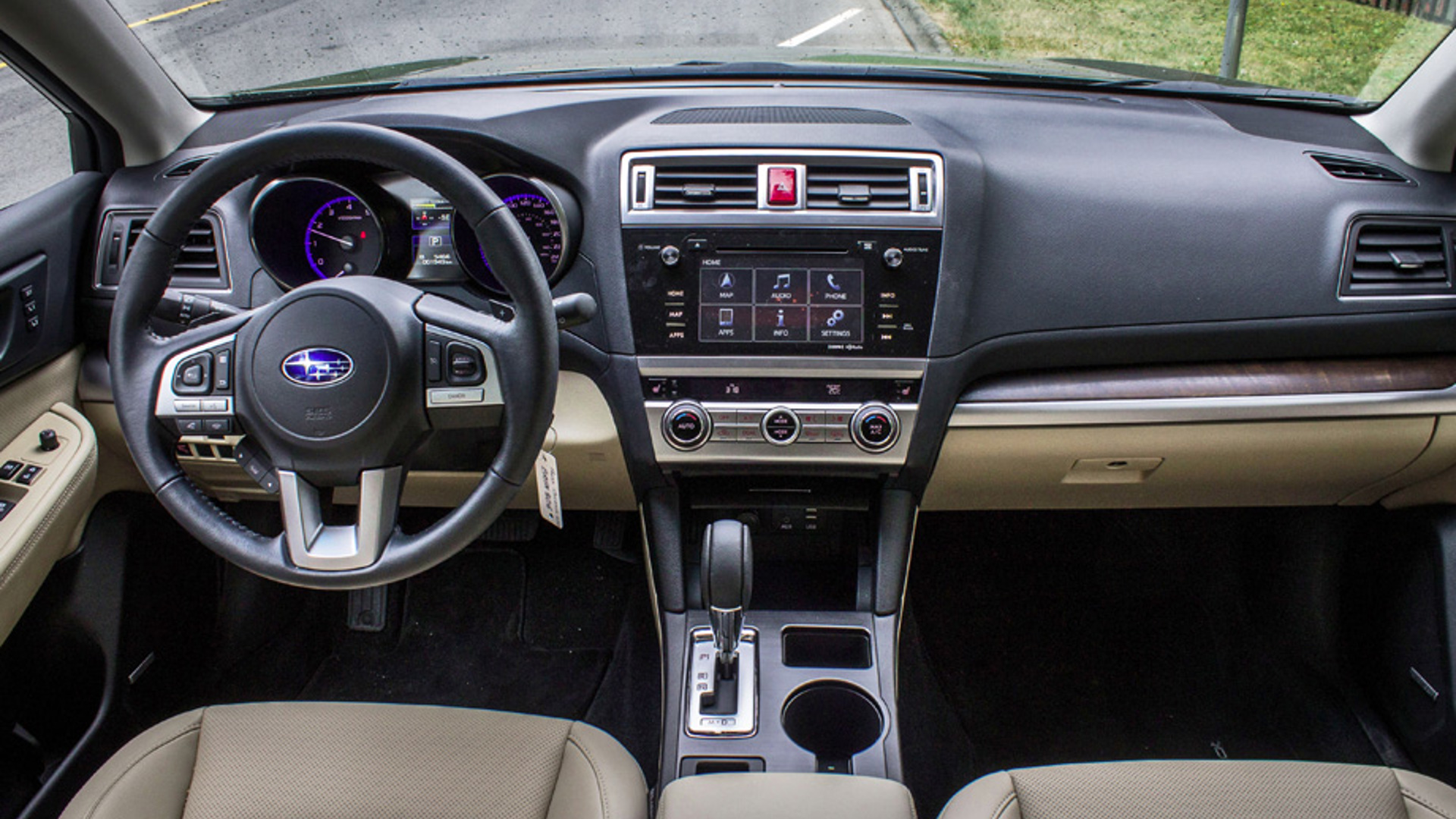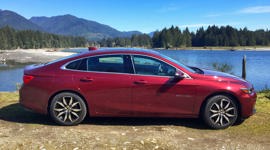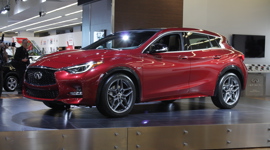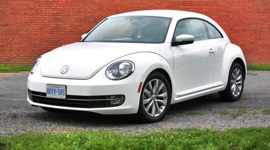Subaru soars while VW fizzles; the sales results show the trend clearly. But the folks at Volkswagen aren’t beaten yet, not by a long shot. They’re readying a new salvo of product to help over the hurdle of Dieselgate, and the new Golf Alltrack leads the way.
Available as a trim level for the new all-wheel-drive versions of the niche-friendly Sportwagen, the Alltrack is clearly aimed at stealing sales back from Subaru. It’s lifted for better ground-clearance, fitted with plastic body-cladding, and all the PR photos feature kayaks strapped to the roof. Ich bin ein Subaru in all but name.
However, get out the tape measure and things aren’t quite so directly comparable. In fact, it might just be a case of German Äpfel versus Japanese orenji.
Four driven wheels

Apart from the sporty little BRZ, Subaru built their reputation on the grip of their all-wheel-drive systems. As an alternative to a big four-wheel-drive SUV, an Outback is far thriftier, but just as good in the snow (assuming you’ve got the right tires fitted).
The Alltrack isn’t making quite that same argument. Instead, it offers itself up as an alternative to the current dominant species in today’s automotive market – the crossover. VW’s 4Motion isn’t a full-time all-wheel-drive system, but rather one that defaults to driving the front wheels only, for efficiency in dry conditions when traction isn’t an issue.
When slippage is detected, the Alltrack’s all-wheel-drive system can send as much as 50 percent of available torque to the rear wheels. In practice, the system is far quicker to shunt power around than old slip-and-grip systems of the past, and even handled a bit of sliding around on gravel roads.
175 mm vs 221 mm

VW makes much of the increased height of the Alltrack over the standard Sportwagen, but that’s setting the bar literally low. Even raising the Alltrack up, it’s still only got around the same ground clearance as a Honda CR-V: around 175 mm.
The Outback is on another level. At 221 mm in height, it’s got clearance to rival seriously capable machines like the Jeep Cherokee Trailhawk. Of course, the question to be asked is: will most people ever exercise that extra 25% gap over the road? With off-road mode engaged, the Alltrack handled a rugged and hilly track that was far more than most potential owners would experience.
850 L vs 1020 L

While even the most active of lifestyles might not require full-on off-roading to get to the trailhead, your average outdoors enthusiast likes to haul a lot of gear around. The Sportwagen is already a favourite of many Gore-Tex clad fans for the way it swallows up a seemingly immense amount of cargo, but it can’t quite match the Outback’s spacious interior.
With more room for passengers and an additional 170 L of cargo behind the rear seats, the Outback also comes out as the bigger backpack on wheels. It’s in the class of a Passat rather than the Golf-based Alltrack.
Four versus four – or six

With turbodiesel options dead as a doornail for the present, the Alltrack’s sole engine offering is a turbocharged 1.8L four-cylinder. Producing 170 hp, it’s roughly equivalent in power to Subaru’s 2.5L flat-four.
However, with 199 lb-ft of forced induction torque from just 1,600 rpm, the Alltrack’s turbocharged engine is far more responsive from low revs. The standard Outback’s 174 lb-ft at a higher 4,000 rpm can’t touch it.
But not so fast, VeeDub. For the price the Alltrack commands (more on that in a bit), you could get yourself an Outback 3.6R with a buttery smooth flat-six. Suddenly, we’re talking 256 hp and 247 lb-ft worth of passing power. There’s a fuel economy penalty, but Subaru offers power too.
$35,295 vs $27,995

In the US market, Alltrack is a model; in the Canadian market, it's a trim level. Gambling that the Alltrack will appeal to the sort of well-heeled buyers that ordinarily optioned a TDI Sportwagen right to the hilt, VW Canada only offers the Alltrack from $35K and up.
Subaru, on the other hand, starts its Outback with a four-cylinder from pricing in the high $20K range. Admittedly, the cheapskate-level Subaru doesn't come with many options, but everything you need is there from Bluetooth to hill-descent control. If you plan on beating the absolute crap out of your car, the Subie's the way to go.
Six-speeds or no-speeds

Even if you opt for the bigger-displacement Outback option, the only automatic gearbox available is a continuously variable transmission. While smooth in operation and capable of returning decent economy, even a well-programmed CVT isn’t particularly engaging. (Subaru does get points for offering a true six-speed manual in mid- and base-trim 2.5i models.)
VW’s six-speed DSG appeals with crisp shifts in both normal and sport modes. Regrettably, Canadian-spec versions of the Alltrack don’t come with paddle shifters, but the DSG is rarely out of sync even when the road gets twisty. It’s the driver’s choice.
250 kilograms
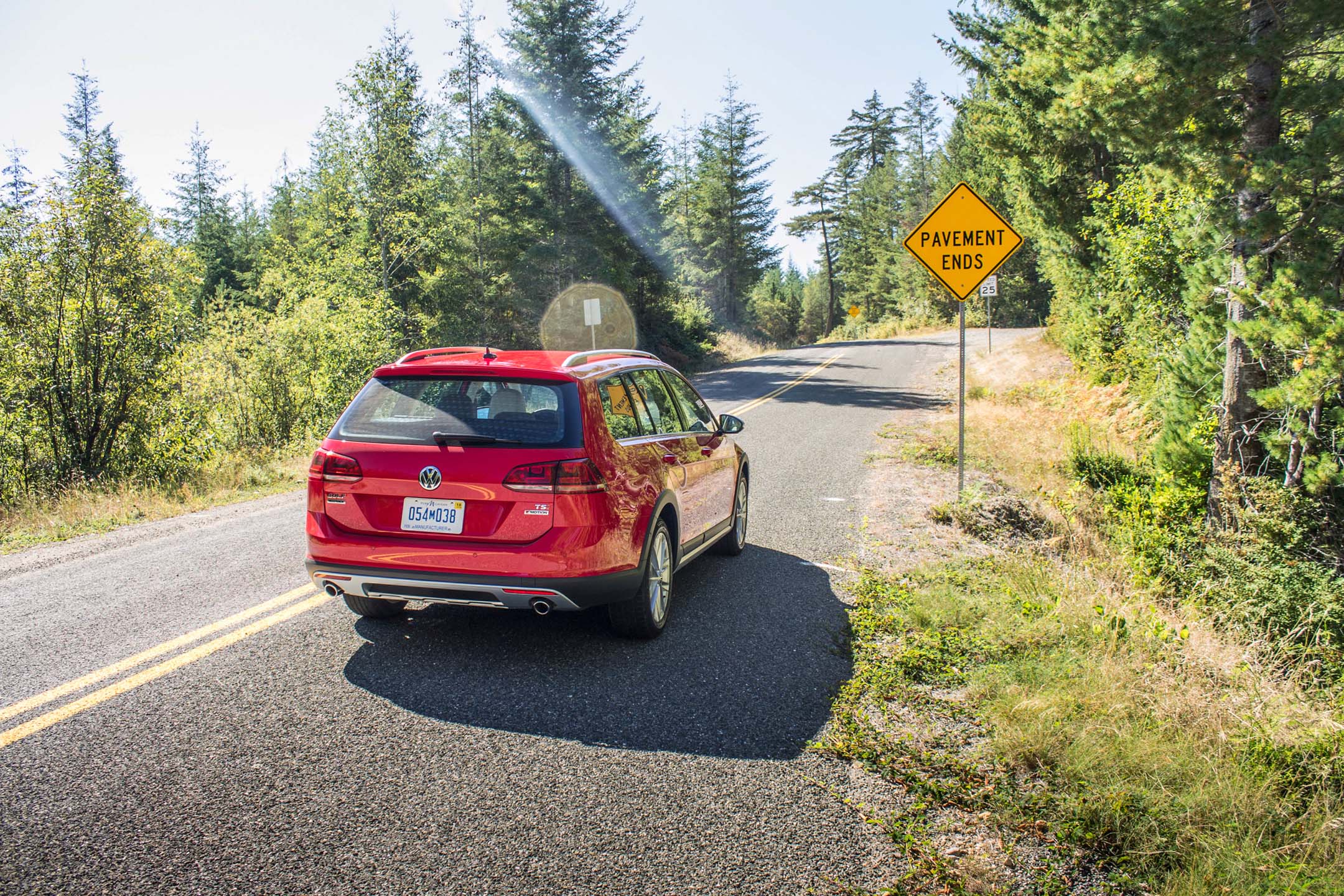
Where the Alltrack has given up ground on size and space, it claws it back by being a much livelier drive. Part of the zip is thanks to the peppy turbocharged four and quicker-witted transmission. The rest of it is down to the Golf underpinnings.
Essentially every Golf has a fun-to-drive element, from the quick and silent E-Golf to the blistering Golf R. The Alltrack takes that basic goodness and adds in reasonable cargo room and a dash of off-road chops. Unlike the Subaru, it also manages to keep the curb weight not far off a standard compact, meaning it feels light on its feet in the twisties.
Even if you’re a weekend warrior, you’ve still got to cover a lot of tarmac before you get to the rough stuff. Consider VW’s Alltrack to be the equivalent of an approach hiking shoe – light and quick on the paved trails, but still rugged enough when there’s a little scrambling to be done.































